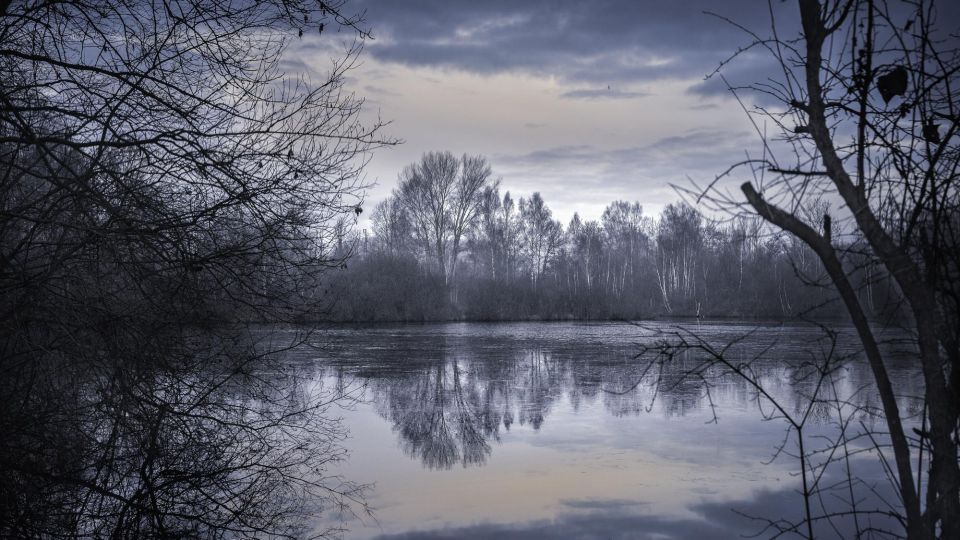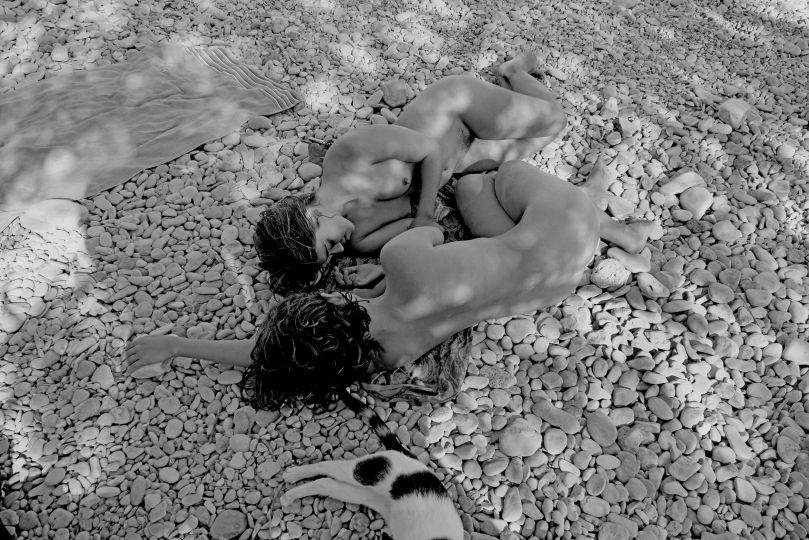These are images of silence. In some of them we seem to hear the sound of night in the countryside. Darkness is peace, a pause, but it can create fear. We are used to having everything under control, and darkness with its apparently generated blindness frightens us.
What is there in the dark? To be banal: the same that there is when it is light. But we create a kind of suspended state that stimulates our imagination. When we are denied a complete understanding of what faces us, and when something at last becomes clear to our eyes, amazement and a sense of the marvellous ensue. The marvel of discovery. A gift. The silence we perceive is sacred in the widest sense of the term and has nothing to do with an uncritical, religious dimension but, rather, with a universal kind of spirituality. Paolo Parma loves the dark, which is not necessarily the night so much as a lack of light, and has often found himself in it. In the dark everything has completely different characteristics. In his works we are guided by lights, more or less tiny reference points, which do not always make up forms. We are led to imagine and complete what is only hinted at, to regain a childlike sense of wonder in the face of what we are shown. At first glance man might seem to be a marginal presence in all this. But this is not so. Man is present, absolutely. In all the work by Parma, an engineer involved for many years now with research through the language of images, man is in fact the protagonist. His are never narratives: we find ourselves, if anything, in front of the wish to dive into the depths, to go in search of the sense of existence in a new humanistic dimension, one in which man, the thinking being par excellence, is at times able to be carried away by. “When humanity finds itself in a setting where it loses its apparent control of things, in some way its best part emerges”1, the artist has said. It is like a defence mechanism. In the dark many reassuring things disappear and, at the same time, we are wrapped in a soft covering. We find ourselves looking for things we know nothing about, for emptiness; we fantasize about elements that shortly before seemed banal and lost in the context of things which are only apparently certain. In this way we develop a profundity that is quite different from the superficiality that sums up our rapid everyday life, one aimed at stupid existential consumerism. The sense of things that we are offered is another one. At times, in the dark we go to sleep, a protective state of unconsciousness, one in which we find refuge in order, perhaps, not to go mad. Sleep is like a metaphor for death, the “eternal sleep”, the only certainty in our life. Here, then, is that particular borderline between being awake and asleep, and vice versa, where we are not alert and manage to develop something else. Parma’s is a research into the meaning of certain experiences that are represented here. To enter darkness is a kind of abandonment: for defence, for our tiredness of a life which leads us, day after day, to a constant search for something that seems important but which distances us from the most radical meaning of our existence. Ours is increasingly a “society of spectacle”2: to enter darkness is to be immersed in it, and to allow ourselves to be overcome by it is like a, more or less merited, pause from everyday stress. Everything comes from a desire to understand, to go beyond the mere appearance of things. His is not a desire to search for or reveal something. Parma is, instead, attracted by the spirit inherent in darkness, by those imaginary and imagined spaces that perhaps do not even exist. No answers are offered. On the contrary, new questions arise. In all this is the wish to have an attitude in common with other people in the face of a predicament. It is the wish to put yourself in the same condition. A feeling of solidarity that
is felt, for example, during an illness, when a useless series of superstructures is annulled and we arrive at the essence of things. In order to bring the viewers closer to his work, Parma has created a kind of graph with clear references of a philosophical and psychological nature. Everything culminates in a consideration that manages to give us a key to this refined work in black and white: “Night- time is the moment of illumination about the truth of the human condition”. At night man is caught at his most fragile; light softens. The darkness that envelops these images where not everything is legible, also envelops phenomena, in the philosophical sense of the term. With darkness there is a particular condition of silence in which we desire, and manage to hear, the surroundings: an increasingly rare condition.
This is a work about doubt, about the sense of human existence, the relationship of humanity with everything, and about the precariousness of relationships, and not only them. Darkness, in fact, represents the greatest condition of uncertainty and is the condition in which we most perceive precariousness, which is not necessarily a negative condition. On the contrary, it is necessary to press ahead to find solutions. Even the viewpoint and the intensity of the tones are not necessarily a deliberate choice. The subconscious of the person who takes the photographs greatly contributed to making one choice rather than another: hence the component of technological indifference, as in the case of Franco Vaccari. Light represents what we normally believe we can control. When certain premises that give this sense of control are lacking, everything appears differently. Paradoxically, the moments in which darkness’s real nature most clearly emerges are the initial moments: the one when we emerge from complete darkness and the one towards evening when light lessens and we are once again faced by the darkness that makes us lose our certainties.
When in the dark, man, besides having the possibility of not seeing what annoys him, strips himself of superstructures, he denudes himself of acquired certainties, and he stands in front of himself, as during the principle moments of our existence: birth and death.
Angela Madesani, October 2014
This article is reserved for subscribed members only. If you are already a member, you can log in here below.
Subscribe for full access to The Eye of Photography archives!
That’s thousands of images and articles, documenting the history of the medium of photography and its evolution during the last decade, through a unique daily journal. Explore how photography, as an art and as a social phenomenon, continue to define our experience of the world. Two offers are available.
Subscribe either monthly for 8 euros (€) or annually for 79 euros (€) (2 months offered).
















